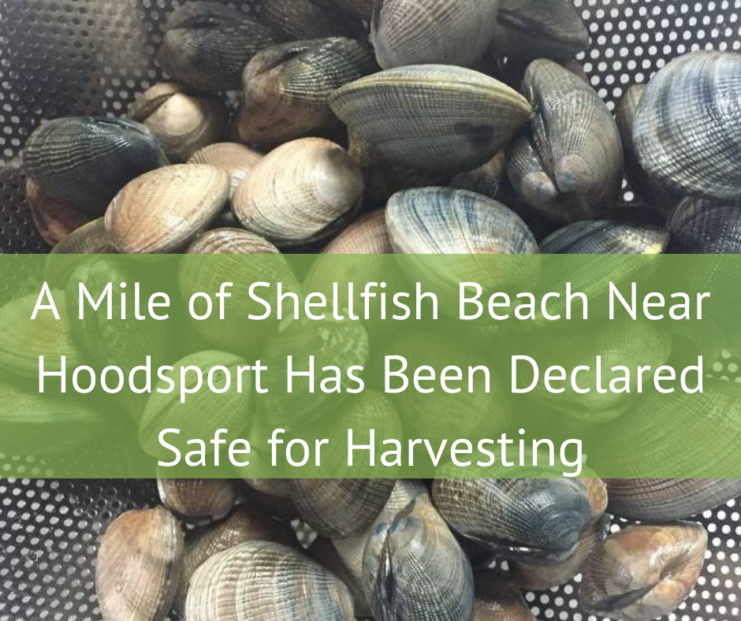This article is a excerpt of an original story by Christopher Dunagan with the Puget Sound Institute. Click here to view the original post and read the entire story.
Efforts to clean up the waters near Hoodsport in southern Hood Canal are paying off with increased shellfish-harvesting opportunities for the Skokomish Tribe, private property owners and recreational harvesters.
The final step in the cleanup effort involved tracking down sources of pollution, including eight failing septic systems, which then were either repaired or replaced. After four years of improving water quality, the Washington Department of Health has upgraded 66 acres of tidelands from “prohibited” to “approved,” certifying that the clams and oysters near Hoodsport are now safe to eat. That’s nearly a mile of beaches previously closed to harvesting for the past 45 years.
Hood Canal has long been recognized as a special place to grow shellfish, and most of its 200 miles of shoreline is certified as safe for commercial or recreational harvests — although most tidelands are in private ownership. Cleaning up the Hoodsport beaches is another step in protecting the waterway from human pollution.
The newly certified area includes two publicly owned beaches that could be opened to recreational harvesting next spring if things go well, according to Camille Speck, intertidal shellfish manager for the Washington Department of Fish and Wildlife. One area is in front of the Hoodsport fish hatchery, and the other is around the Port of Hoodsport dock. Both areas must be surveyed for shellfish quantities, and the port still needs to give its approval, Speck said.

“The beauty of both of these locations is their easy access,” she said. “This is a real big win for the recreational fishery.”
Speck praised the organizations involved in the cleanup effort, including the Skokomish Tribe, which pushed for the project and assisted in water-quality sampling; Mason County Public Health, which tracked down the sources of pollution; and the Hood Canal Coordinating Council, which provided support from its federally funded Hood Canal Regional Pollution Identification and Correction Program.
In addition to recreational activities, the newly certified beaches allow for commercial and tribal harvesting near Hoodsport. In April, the tribe launched its first oyster harvest in that area following a survey to estimate quantities of shellfish, followed by notification to property owners. As interpreted by federal courts, tribes are entitled to half the naturally produced shellfish found in their traditional areas.
Joseph Pavel, natural resources director for the Skokomish Tribe, said tribal members are happy to have a new area for harvesting located so close to the Skokomish Reservation and accessible by land as well as by boat. That area has been culturally significant to the tribe since long before white settlers arrived on the scene, he said.
“This is a fine example of working together and paying attention to the problems in a way that we can all benefit,” Pavel said.
Alex Paysse, environmental health manager for Mason County Public Health, said the final push for cleaner water in Hoodsport came with the help of the Hood Canal Coordinating Council, which provided funding through the Environmental Protection Agency’s National Estuary Program.
“We did a lot of door-knocking and talking to homeowners about how their septic systems work,” Paysse said. “Some of these septic systems were pretty old, and some had not been working right for many years.”
Hoodsport is a tourist destination with far more people living in town during the summer months, he noted. Health inspectors and water-quality experts located “hot spots” of polluted water draining to the beach. They were able to track most of the pollution back to failing septic systems.
Click here to read the rest of the article at the Puget Sound Institute
Did you know?
Pollution Identification and Correction programs help counties find and remove bacteria sources that threaten human health in areas where people harvest shellfish and enjoy other forms of water recreation. This work is essential to maintain and improve water quality in Puget Sound. The Shellfish Strategic Initiative works to support and sustain this important work through EPA Puget Sound Geographic Funds. Click here to explore Shellfish Strategic Initiative funded projects.

